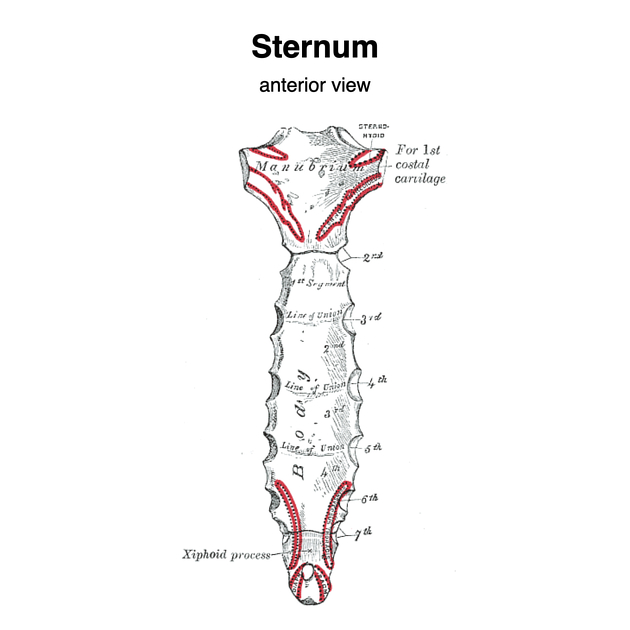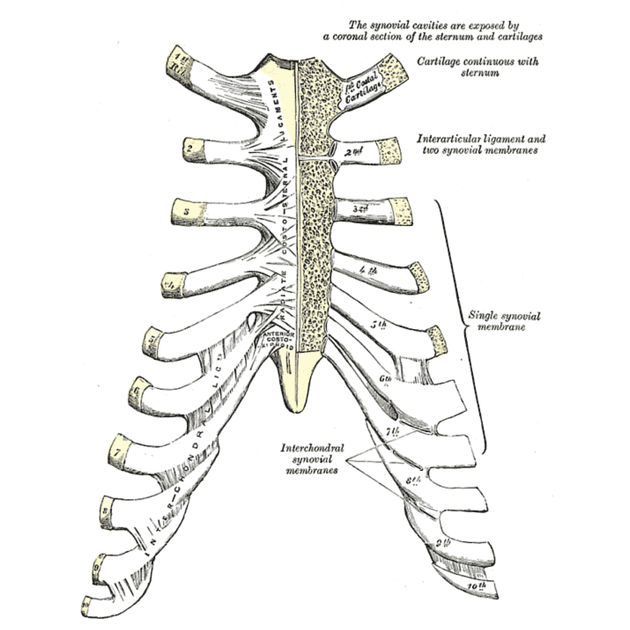The sternal body or gladiolus is the middle and largest of the three parts of the sternum. It is formed by the fusion of four sternebrae which finish ossifying after puberty.
On this page:
Gross anatomy
The sternal body is the longest of the three parts of the sternum and is widest near its lower end. It is flat anteriorly, slightly concave posteriorly and has concave articular facets along the lateral borders 2. Across the anterior surface at the level of the third, fourth and fifth cartilages are three faint ridges representing the fusion of adjacent sternebrae 1.
Articulations
The sternal body forms a secondary cartilaginous joint with the manubrium, which normally does not ossify and is oval in shape. The manubriosternal articulation is known as the sternal angle (of Louis) and is found at the T4/T5 level (forming the transthoracic plane of Ludwig) and is a palpable landmark for the second costal cartilage 3.
The xiphisternum represents the unossified lower end of the body, which usually ossifies later in life.
At its superior aspect, the sternal body forms a synovial joint with the inferior aspect of the second costal cartilage, which is a separate joint to the articulation with the manubrium 1. Below this are indentations for the third, fourth, fifth and sixth costal cartilages. The inferior angle, along with the xiphisternum, forms a facet for the seventh costal cartilage.
Attachments
- pectoralis major: sternal head arises from a wide area on the anterior surface almost to the midline
- transversus thoracis: arises from the posteroinferior aspect
- anterior intercostal membrane and internal intercostal muscle: attaches to the lateral aspect between the costal facets
- sternopericardial ligament: attaches from the posterior aspect of the sternal body to the fibrous pericardium
Variant anatomy
A sternal foramen can occasionally be found usually within the second, third or fourth segments and can mimic a fracture.










 Unable to process the form. Check for errors and try again.
Unable to process the form. Check for errors and try again.